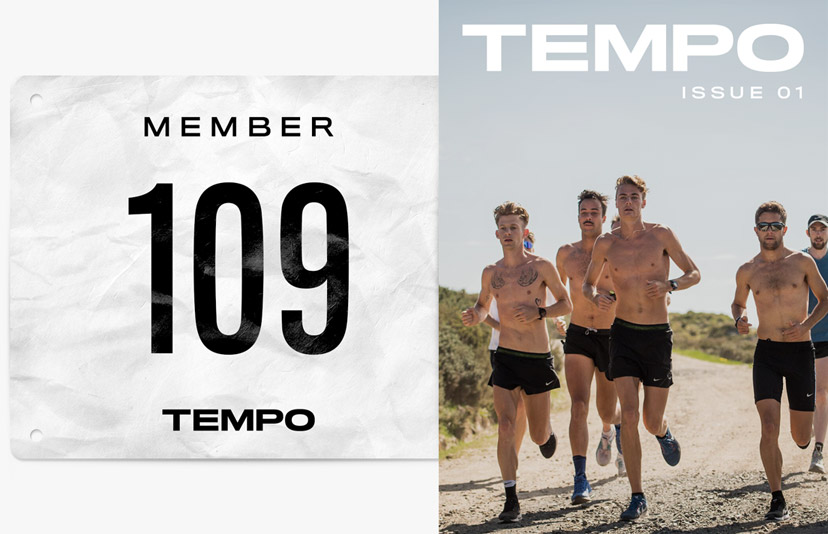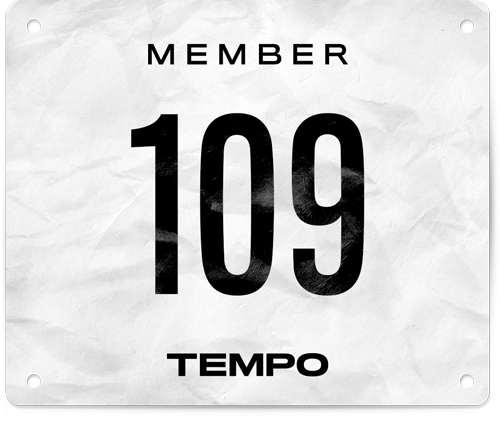Lifestyle
JUST DROPPED: The New Balance 1080 v11
Giving you the lowdown on New Balance's all conquering daily trainer
Editor's Note: We're checking out the New Balance 1080 v11 as part of a partnership with New Balance. Read on to learn the ins and outs of their new release.
Daily trainers (the shoes we do most of our mileage in) attract an almost religious fanaticism, and for good reason. While our race day shoes are the ones in the finisher photos and the ones we credit for all those PR’s, it’s the daily trainer that gets us to the start line. This is the shoe we rely on day in and day out to chew up the miles in whatever weather we throw at it. They’re rarely cleaned (if ever), but they carry their scars well, and when they’re finally done, they’re often replaced with an identical pair and the cycle starts again. We all have our go-to daily trainers, and to get someone to change you better have a damn good argument.
Today we’re talking about New Balance’s neutral daily trainer and long run shoe, and arguably their most popular model, the 1080 v11. This is, you guessed it - the 11th version of this shoe, and one that most critics seem to agree is right at the top of the heap as far as mileage beasts go - but more on that later. For now, let’s dive into what it is, why you should care, and where it might fit in your rotation.
As a daily trainer, the 1080 v11 comes with a whole heap of cushioning - exactly what you need to get you through most of your mileage for the week. Why do we like max cushioning in a daily trainer? If you’re someone who takes running reasonably seriously and mixes easy days with sessions and long runs, you don’t want your easy days making you tired for your sessions. Or if you’re someone who runs 5-10k a couple times a week, you don’t want to be feeling sore the next day. This is where the cushioning comes in - absorbing impact and keeping our joints and muscles feeling fresher compared to shoes with less cushion. Done right, your daily trainer can be both your easy/recovery day shoe, and your long run shoe, and help you recover from a long day on your feet in time for your next session.
The 1080 v11 has a stack height in the heel of 30mm, and 22mm in the forefoot, giving it a drop of 8mm - pretty standard for a daily trainer and something that’s going to be kind on the calves and Achilles. All that stack is made up of Fresh Foam - New Balance’s proprietary lightweight foam designed for all-day comfort.
As I mentioned at the top, a lot of reviewers loved the 1080 v10 - with at least one calling it the ‘daily trainer of the year’ in 2019. So if you were a fan of v10, you’ll be pleased to know the biggest updates here come in the upper - sitting here writing this with the v10 and v11 on my desk, there’s some clear changes.
The most visible difference is the knit construction updates on the v11 (side note - New Balance's knit is called 'Hypoknit'). And while it might look a little different, there's more to the toebox than a cosmetic change. There's a very real difference in the fit - there is a slighly deeper forefoot in the v11, which means if you're someone with a wider foot you're going to have a bit more room for your toes to splay. However given the elastic blend in the top layer of mesh, it shouldn't ever feel loose or sloppy - regardless of the width or otherwise of your foot.
Speaking of the mesh upper, I do want to touch on the 3-layer mesh because the design is pretty cool. The first layer (closest to your foot) is completely seamless, which eliminates the chance of irritations or pressure points on the foot. The middle layer has a polyester blend to draw moisture away from your foot (where it will then evaporate), while the top layer has an elastic blend - to give you that nice lockdown.
Speaking of lockdown (or fit, rather), we’ll briefly touch on the tongue. I’m going to say it’s identical in materials to the v10, and it remains a gusseted tongue, but it does appear to be shorter. The gusseted tongue helps with a more consistent and comfortable fit, so it’s no surprise that it’s a carryover on the v11.
Staying with the upper, another key feature of the shoe is the heel cup. Gone are the days where we used to have really siff heel cups (or heel counters), and that's largely beacuse especially in daily trainers like the 1080, we've got bigger landing areas and more foam - these features play a role in stability and therefore we don't need a set-in-stone heel cup.
The heel cup on the 1080 (referred to by New Balance as 'Ultraheel') is 3D moulded, and is lighter than previous versions - and typically when brands can save weight on things like heel cups or uppers, they're able to put more into the midsole, giving us more bang for buck.
You'll see from some images further on that the heel cup on the v11 has been reduced in height (I’m comparing a US11 in both and I would estimate it has lost around 1cm in height) and now wraps around the foot more all the way to near the tongue - there’s a better merge between the heel cup and the rest of the upper, which should contribute to a more harmonious fit. Anyone who had the v10 would remember the almost sharp join between the upper and the heel cup - that has been replaced with a much nicer integrated heel cup (images below).
The heel cup retains the flared ‘wing’ at the top, keeping it away from the Achilles to avoid any risk of rubbing or aggravation.
So comparing the back of the shoe to the v10, we see a slightly shorter tongue, a heel cup that is a little shorter and also has a smoother join with the midfoot of the upper - these are all things that we would expect to increase comfort and reduce potential rubs or irritations some runners may experience.
While there are no changes to the outsole, that doesn’t mean it’s not worth exploring. You’ll notice plenty of outsole rubber over the top of the Fresh Foam - you can see just by looking at it that this shoe is going to take a lot of miles - there’s rubber pretty much on every possible wear point. And while this is a road shoe and not something you’re going to take over serious trails, you’ll be able to throw a lot at this outsole without worrying about destroying the shoe - exactly what many of us need in a daily trainer. Some people do a lot of their weekly mileage on dirt or gravel which can chew up outsoles - the 1080 v11 might be worth a look if you’re worried about the lifespan of your shoes.
HOW TO USE THE 1080 v11
While it’s primarily positioned as the everyday trainer, it’s worth exploring what that means and what the 1080 v11 might be able to do for you.
As mentioned at the top, if you’re someone who takes your running seriously and is on a training program, there’s a few uses for the 1080 v11. It has all the ingredients to handle long runs - the cushioning, the breathable upper, and the heel cup for support to name a few. If you have a couple of easy jogs or recovery runs mid-week, it’s also a serious option there - you generally want a shoe that’s going to keep your legs feeling fresh, something that’s comfortable, and you don’t want to be dragging around a pair of bricks on your feet. Finally, if your program has the classic ‘easy hour + strides’ on it - you won’t have any problems shifting the speedometer on the run-throughs.
Now, if you’re someone who runs 2-4 times per week primarily for fun and you don’t have a set program, the 1080 v11 could be your do-it-all option. It’s got the comfort and support that a lot of people are looking for, and it’s not clunky or bulky - meaning if you want to sprint for a light or half-step a mate, it’s going to be up to the task.
SUMMARY
The 1080 v11 gets tweaks rather than changes-for-change-sake, and previous owners of the 1080 v10 will probably be very happy with that. For anyone who hasn't tried a 1080 before - there's a reason why the critics regularly put this in the top few daily trainers. If you're not in love with your daily trainers - something's wrong, and it might be time to evaluate your options.
The New Balance 1080 v11 is available now - click here for New Balance Australia and here for New Balance New Zealand.


